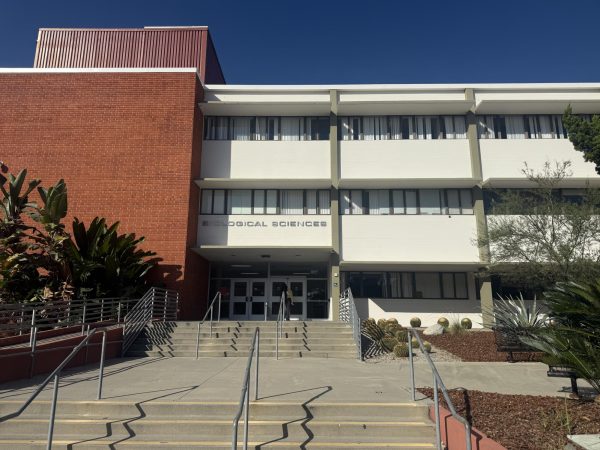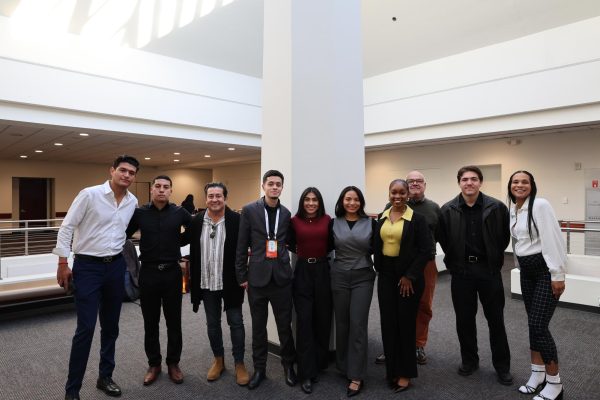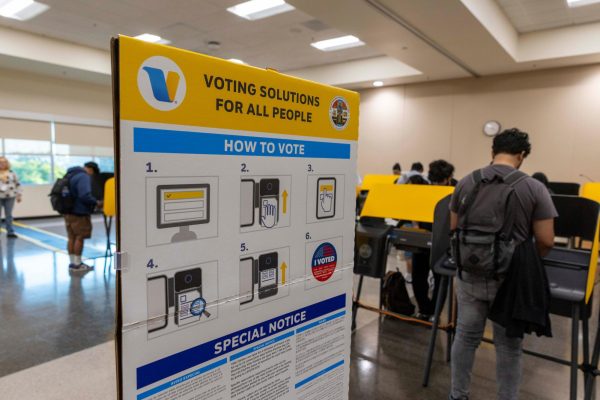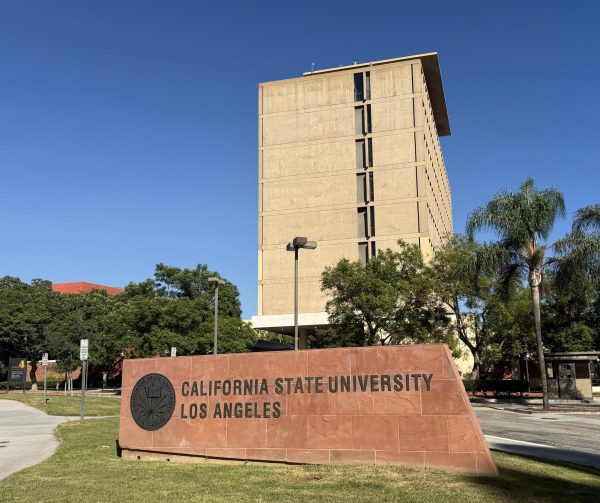Cal State LA addresses water concerns
Around 10 sprinklers going off on a small patch of grass near the soccer field at around 2 P.M., breaking LA County water restrictions.
Los Angeles County, along with the rest of California, is currently going through severe droughts, according to the U.S. Drought Monitor.
Some students are concerned about the amount of water used on campus, including when and where the sprinklers go off.
Alex Holguin, a television,film and media studies major, noticed how some of the sprinklers on campus are pointed toward concrete paths.
“There usually are some that hit the concrete and make students go in a different direction,” Holguin said. “If there’s only one path and it’s getting blocked by water, they can get wet and get sick, or maybe take the street, which is pretty dangerous.”
Stephen Ladochy, an environmental studies professor, said that the campus could do more in water conservation.
“We do some things,” Ladochy said. “Definitely not enough. If you go to the washrooms or the pool area, you know that there is a lot of wastage and there could be ways in which we could save on a lot of that water.”
One solution is reusing water.
“California in general, we have to start recycling more of our water,” Ladochy said. “Most of our water goes directly into the sewage or runs off into the L.A. River and into the ocean. So we can’t use that.”
In a 2019 L.A. Times interview, Mark Gold, the associate vice chancellor for environment and sustainability at UCLA, said “When you look at the Los Angeles River being between 50% and 70% full during a storm, you realize that more water is running down the river into the ocean than what Los Angeles would use in close to a year. What a waste of water supply.”
Cal State LA achieved a Gold rating from the Association for the Advancement of Sustainability in Higher Education, according to a university spokesperson.
STARS is a self-reporting system for education institutions to view their sustainability performances. The association uses the Sustainability Tracing, Assessment & Ranking System (STARS) to measure the sustainability of higher education.
The system ranks sustainability levels including water usage from bronze to platinum, and Cal State LA scored a 70.79 rating out of 100.
“During periods of extended drought, wind or grading, trunks, limbs and foliage should be sprayed with water at the end of the workday to remove accumulated construction-engendered dust,” according to the university’s 2022 Sustainable Landscapes and Tree Care Plan.”
Marquez reported seeing sprinklers going off in the middle of the day.
“It was at like noon, and it was hitting the concrete,” Marquez said. “I’ve seen it.”
LA County currently has Phase 3 Restrictions that only allow watering before 9:00 a.m. and after 4:00 p.m.
The University, Public Affairs spokesperson told the UT that they are unable to track irrigation separately from another water usage on campus but have implemented methods to save water.
Some of these methods included switching to drought-resistant plants, installing low-flow systems and smart irrigation controllers and discontinuing power washing on the outside grounds.
The university spokesperson told the UT that they have reduced water usage from about 119 million gallons to about 54 million gallons since 2014.
Some students have been practicing ways to conserve water within their own households.
“I take shorter showers now,” said Linda Marquez, a psychology major. “When I’m brushing my teeth, I turn off the faucet. In my house, we only turn on the sprinklers at night.”
Having high efficiency plumbing within households can save about 30% of indoor water, according to the EnergyStar.

Anne To is the Editor in Chief of the UT and also the co-Station manager of the Golden Eagle Radio. She loves working on audio production with radio, podcasting,...










